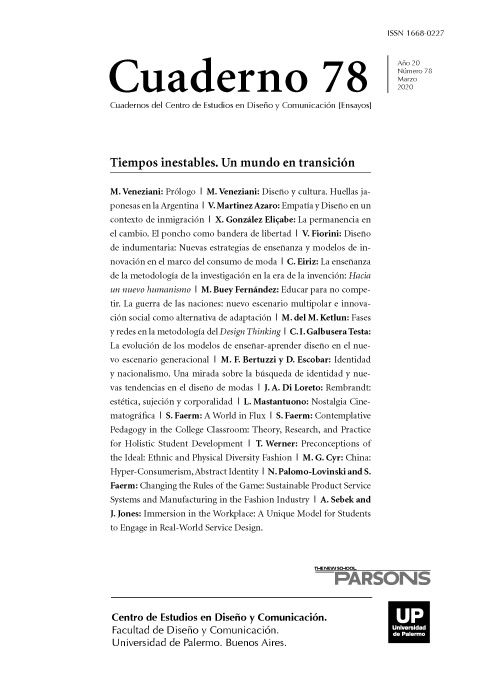Immersion in the Workplace: A Unique Model for Students to Engage in Real-World Service Design
Résumé
Since 2015, Fjord and Parsons School of Design have been collaborating to create a mutually beneficial alternative to internships by immersing Design and Technology graduate students in the one-week Fjord Immersive Design Studies. The Design Studies at Fjord operate outside of direct client work and are a perfect vehicle to engage students in structured human-centered design research.
The mission of the Fjord/Parsons Immersion Program is to influence the future of design, to shape future designers, and to propel Fjord’s service design innovation. For the Parsons students, the experience as contributing members of a service design team is an unusual benefit. While traditional months-long internship programs can sometimes be a strain on company resources or an unproductive learning experience for students, the Fjord/ Parsons Immersion Program is an excellent alternative training opportunity to engage students in meaningful work to achieve valuable research in human-centered service design for Fjord. This paper discusses six cases of Parsons graduate students who benefitted from the program.
Références
Andriopoulos, C., & Lewis, M. W. (2010). Managing innovation paradoxes: Ambidexterity lessons from leading product design companies. Long Range Planning, 43, 104-122. Atlanta, GA: Elsevier Publishing.
Hao, K. (2017). Designers at Fjord built a vr system that teaches first time wheelchair users. Retrieved from http://designers-at-fjord-built-a-vr-system-that-teaches-first-timewheelchair-users-how-to-navigate-city-environments/
Jensen, S., Kalantari, R., & Venstad, G. (2016). Fjord makeshop owls creating community. Retrieved from https://www.fjordnet.com/conversations/fjord-makeshop-owls-creatingcommunity-in-a-global-workplace/
Kelley, T., & Littman, J. (2006, 2008). The ten faces of innovation: Strategies for heightening creativity. New York: Crown Publishing Group.
Osborne, A. F. (1979). Applied imagination: Principles and procedures of creative problem solving (3rd ed.). New York: Charles Scribner’s Sons.
Perlin, R. (2012). Intern nation: How to earn nothing and learn little in the new brave economy. Brooklyn, New York: Verso Books.
Schön, D. (1982/83). The reflective practitioner: How professionals think in action. New York: Basic Books.
Webber, R., & Webber, M. (1973). Dilemmas in a general theory of planning. Working Papers Urban and Regional Development. Berkeley, CA: University of California, Berkeley.
Whyte, W. (1980). The social life of small urban spaces. New York: Project for Public Spaces, Inc.
Los autores/as que publiquen en esta revista ceden los derechos de autor y de publicación a "Cuadernos del Centro de Estudios de Diseño y Comunicación", Aceptando el registro de su trabajo bajo una licencia de atribución de Creative Commons, que permite a terceros utilizar lo publicado siempre que de el crédito pertinente a los autores y a esta revista.


